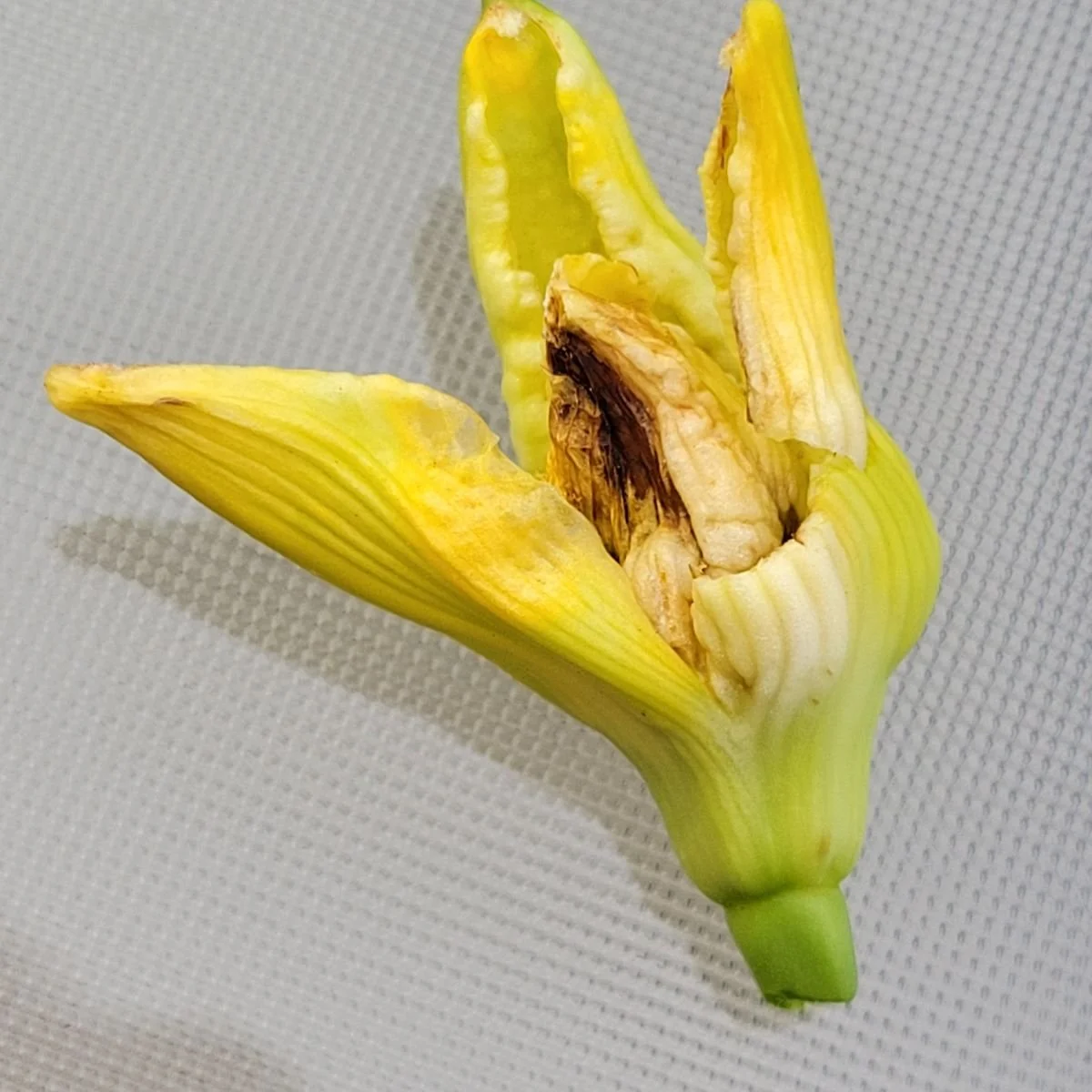Gall Midge in Daylily Buds
Daylily plants are one of the hardiest plants in the garden. But sometimes even the hardiest plants have problems
This week my Aunt Erna sent me photos of some Daylily Buds in her garden. Last season she had a critter eating all the buds and without a photo, I wasn’t able to help her figure it out.
Guess what? Those little guys came back this year!
See the little white wormlike bugs? Those are Gall Midge maggots.
I sent her photos off to Dr. Ken Fry at Olds College (he’s an entomologist, someone who specializes in insects), and he identified the insect as a Gall Midge.
What is this bug?
The Gall Midge (Contarinia quinquenotata) is a little fly that lays its eggs in the buds of the Daylily plant. As the eggs hatch they become maggots and start to feed inside the flower bud.
This feeding makes the buds inflate and become all weird-shaped. Once this happens the buds aren’t able to open. Some buds will even shrivel up and die.
How did you get them?
Gall Midge Damage
Gall Midge can come from infected soil at a garden centre or from a shared plant with a neighbour.
The Gall Midge feeds on the buds and then when they mature, they drop to the soil where they overwinter till the next season. They become flies and in the spring lay their eggs in the newly formed buds.
What should we do?
The best thing to do is to cut off all the buds on the Daylily and dispose of them. DON’T put them in your compost. Burn them or put them in your garbage. You need to kill the maggots and not reinfect your garden.
Each bud can contain over 100-200 maggots. That’s a lot of bugs that can do damage.
You may not have any blooms this year, but you should be able to have them next year.
Gall Midge Damage on Daylily
How can we prevent this?
When buying new plants you can wash all the soil off and cut off all flower scapes (flower buds). This makes sure that you aren’t bringing in dormant larvae in the soil or maggots in the flower buds.
Each year if you see damage, remove the affected buds, and you will reduce the population of insects to the point where you shouldn’t have much damage in the following years.
It may take a few years to get that population down, but it’ll work.
There is usually only 1 life cycle of these flies so by removing all the maggots you should be able to drastically reduce the population in one growing season.
Can I use pesticides?
No, since the maggots are inside the flower buds, pesticides aren’t effective.
Have you ever had this type of damage?
I’d love to know if you’ve seen this before. By sharing we can help other gardeners prevent the spread of these insects.
Happy Gardening,
Heidi Motz




